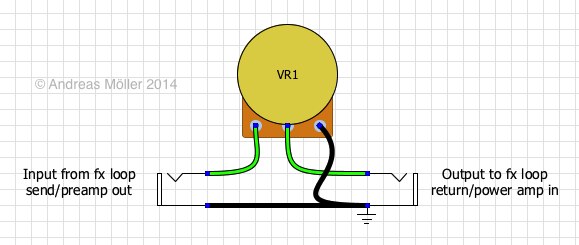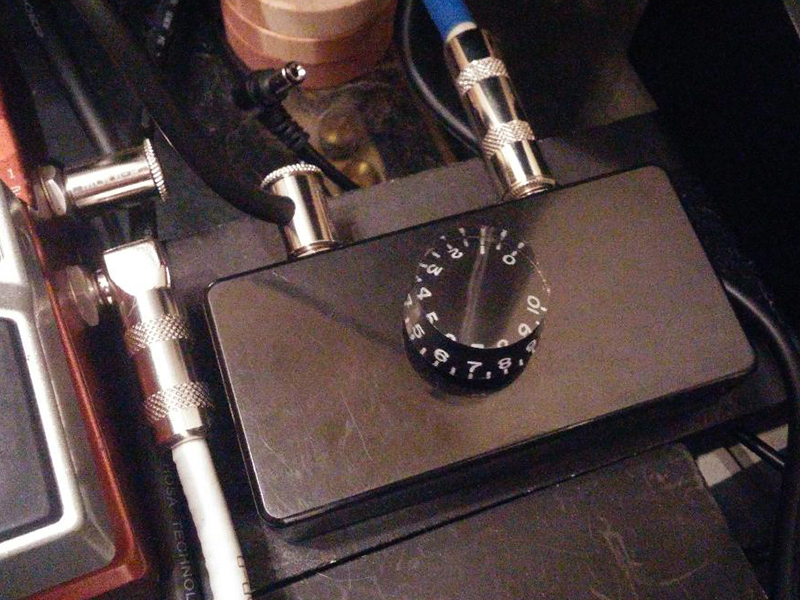Deep Purple fan
Well-Known Member
bedroom levels sounds kick ass) just keep the bias cool its much better
Nice job
bedroom levels sounds kick ass) just keep the bias cool its much better
No, the CH volumes do not affect the emulated out.
Wait, so you are saying mine is defective?I thought that might be the case. Unfortunately yours has a problem that affects both the emulated out and the FX loop. This was confirmed to me directly by Marshall. If you check out my other thread, I had to go through four replacement amps before I got one that finally worked right. Not sure how old yours is but if you're still within the return period, you may want to exchange it for one of the newer ones that has already been fixed. If not, Marshall will fix it under warranty.
The FX loop isn't supposed to work the way you described yours and the channel volumes are supposed to work normally through the emulated out. According to Marshall, as I understood it both issues are corrected with one fix.
I bet there are at least several hundred, maybe even several thousand people with defective DSL20s without knowing it. They think the FX loop is just strange and they probably haven't tried the emulated out.
Wait, so you are saying mine is defective?
So, what is the fix?Yes. The volume controls are supposed to work normally through the emulated out. And the loop should also work normally.
So, what is the fix?
Found a very helpful, to me at least, common sense solution to an annoyance I discovered.
On the DSL20, and if I remember right my version 1 DSL40C also did it, if you're on the Ultra channel and turn the channel volume all the way down, there's still a bunch of high-end fizz/dirt that bleeds through. You have to turn the volume up to almost 9:00 before the fizz is compensated for by the rest of the frequencies. This makes ultra-quiet home playing a bit of a challenge because basically, at those low volumes you're getting mostly fizz which sounds like ass.
My first solution was an attenuator which worked OK but was a rather clunky solution.
This morning I had a blinding stroke of brilliance, or maybe just a stroke...., and remembered that somewhere in all my gear I have a little $20 passive volume box designed to go in an amp's effects loop. There are a bunch on the market but this one is made by Carl's Custom.
I stuck it in the FX loop and viola! It worked perfectly. I was able to turn the channel volume up as high as I wanted, which completely eliminated the fizz, while controlling the final output volume using the volume box. Of course, I know this doesn't engage the power section at all like an actual attenuator does, it just controls how much pre-amp signal is fed to the power section, but the fizz is coming from the preamp section and that's what I needed to get rid of.
I can now play at pin-drop volumes with a full sound and absolutely none of that low volume fizz.
I'm sure a regular volume pedal in the FX loop would likely do the same thing, maybe even a clean boost pedal using it as a volume control in the loop, but to me the passive volume box is a much cleaner solution since it doesn't require any power, so no extra power cables to worry about. Just a pair of 6" patch cables and you're all set.
It can also double as a way to boost volume for leads at band practice since the amp's footswitch lets you turn the loop on and off. Loop on with volume attenuated for rhythm parts, loop off for normal volume for leads.
Anyway, I'm sure most of you have already seen and know about these volume boxes but figured I'd share my solution in case anyone else was annoyed by the fizz that bleeds through at super low volumes and is looking for an easy solution.
Should you buy one, then? Well, why not? If it helps you get the tone you like, and as long as you know what you’re buying – that it isn’t anything magic, and that it won’t let you run the power amp any hotter than you’d normally do – have at it. And at the prices they usually go for on eBay, it’s hardly worth building your own – the parts alone (when bought in singles) can easily cost as much.

But if you want to build your own, all you need is a box, two jacks and a potentiometer. I’d probably use a 25K audio/log pot, but I’ve seen 100K pots used too. Here’s the wiring diagram:
BTW I also discovered that most FX loops are line in but some pedals are instrument out only not line out which results in some brands and particular models of pedals not playing nice in the FX loop which can result in a volume drop.
I guess some pedals are only designed to go in front and be used with the the amp input only.
A whole other rabbit hole to go down but I also found a solution for that on pretty much any amp. A Hotone Fat Buffer as the last pedal in your loop fixes that perfectly. It's a buffer and also has a level control to bring the volume level back up, and tone controls to restore any lost highs or lows. It can also serve as a volume boost for leads.
Hey, when you got one that was finally right, did it sound any different?Marshall wouldnt tell me. All they said was that it needs a "factory update" which fixes both the loop and the emulated out.
Hey, when you got one that was finally right, did it sound any different?

I've had a few amps that do this. I could be wrong but if I remember right, the Mesa ROV25 does it but not to this extent. A lot of amps have a little bit of high end fizz bleed through on the distortion channel when the channel volume is at zero.